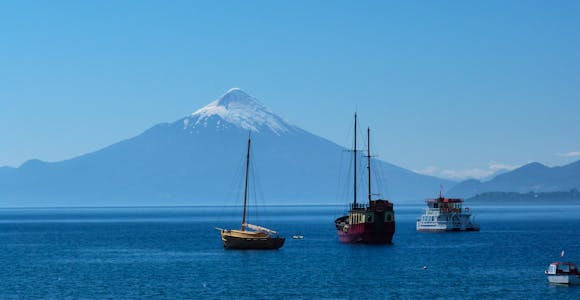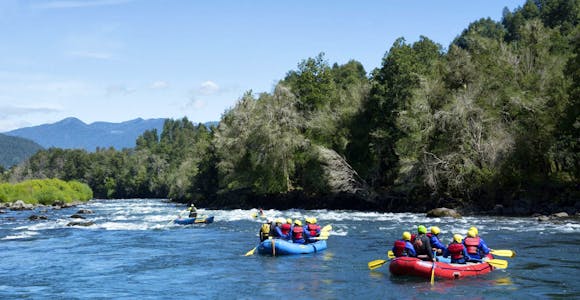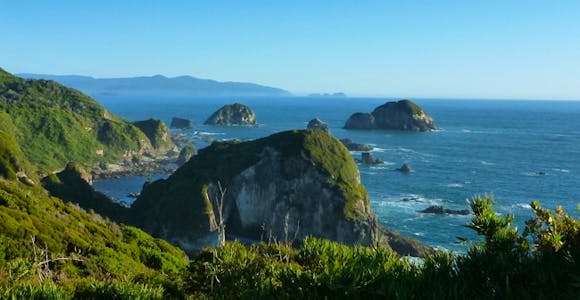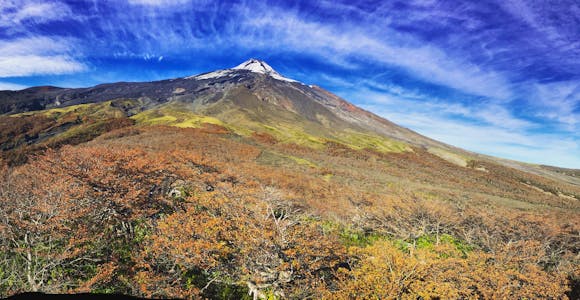
Puerto Varas
Perched on the shores of Lake Llanquihue and overlooked by the Osorno and Calbuco volcanoes, Puerto Varas is the perfect gateway to the Chilean Lake District.
Discover MoreDeep roots in Patagonia: We are ex-guides, tour leaders, outdoor enthusiasts, & adventurers.
We’ve got our feet on the ground: Impartial advice, a bespoke service, and at no extra cost.
For the ends of the Earth: Sustainability is more than our carbon footprint (but we’re reducing that too).
Deep roots in Patagonia: We are ex-guides, tour leaders, outdoor enthusiasts, & adventurers.
We’ve got our feet on the ground: Impartial advice, a bespoke service, and at no extra cost.
For the ends of the Earth: Sustainability is more than our carbon footprint (but we’re reducing that too).

The Chilean Lake District is easy to integrate into a trip to other parts of the country, with plentiful flights from Santiago, connections to Torres del Paine in southern Patagonia, or considering travelling across the border between Chile and Argentina. From road trips to slow ferries along the fjords, this page gives you the low down on transport options around this beautiful region.

The Chilean Lake District is served by two main airports at Puerto Montt and Temuco, as well as a small airport on Chiloé island.
Puerto Montt’s Tepual airport (PMC) is the main entry point for those travelling to Puerto Varas, Chiloé and the southern part of the Lake District. It has up to 10 daily flights to Santiago (SCL, 1¾hrs). There are also daily flights to Punta Arenas (PUQ), connecting the Lake District to Torres del Paine National Park (2hrs), and to Coyhaique (BBA) daily (1hr).
Temuco’s Araucanía Airport (ZCO) is the main entry point for those heading to Pucón. There are at least three daily flights to Santiago (75 minutes).
For Chiloé, Castro’s Mocupulli airport (code MHC) has daily flights to Santiago (2hrs), but is also easily accessible from Puerto Montt.

On the road to the Chilean Lake District
The Panamerican Highway runs south from Santiago through the Chilean District. The route is well-plied by buses, which take around 9hrs to reach Temuco, or 12hrs to Puerto Varas. With the Andean Cordillera a constant presence along the way, and the smooth road is quick to drive with plenty of interesting diversions – not least because it passes through some of Chile's best wine country.
If you're arriving from southern Patagonia by road, you'll be approaching the Chilean Lake District along the famous Carretera Austral highway, which terminates in Puerto Montt. Driving on this more than 1200km-long route is a truly memorable experience but one that requires a bit of preparation – see our dedicated page for more information.

View of Puntaguido Volcano from the Cruce Andino ferry
The most exciting way to travel between the Chilean and Argentine Lake Districts is the scenic Cruce Andino route (also called the Crude de Lagos), which combines ferries and buses to travel in around 12 hours between Puerto Varas and Bariloche.
An early morning shuttle takes you from Bariloche along the shores of Lake Llanquihue and through Vicente Pérez National Park to Petrohué, where you board a ferry across Lake Todos los Santos to Puella. From here, another bus takes you to the Argentine border at Puerto Frías, a second ferry across Lake Frías under peak of Cerro Tronador. A short transfer then takes you to the last ferry of the day, traversing the western finger of Lake Nahuel Huapi to Puerto Pañuelo, and the final shuttle bus to Bariloche. It's a long day but a truly spectacular one.
An alternative (if less organised) lake-and-road route runs between Pucón and San Martín de los Andes. From Pucón, buses run to Puerto Fuy to catch a ferry across Lake Pirihuelco. At its southeastern tip, a second bus runs to the Argentine birder at the Hua Hum Pass. From here, it's a gravel road along Lake Lacar to San Martín.
There are also direct buses between Puerto Varas and Bariloche (7 hours) and between Pucón and San Martín (5 hours).

Catching the ferry to Caleta Gonzalo
Although it's possible to fly direct from Puerto Natales to the Chilean Lake District, a tremendously enjoyable alternative is to travel by ship to Puerto Montt following the dramatically crinkled coastline of Chile's fjords. The Navimag ferry Esperanza sails once a week and takes four days/three nights to slowly make its way north. The forest-clad fjords, mountains and snow-capped volcanoes you pass along the way make this one of the most breath-taking ferry rides in the world, not to mention the chance to spot whales, dolphins and marine birdlife. Cabins on board are simple but comfortable, and should be booked in advance.
To get to Chiloé, the most straightforward route is on the car ferry that runs between Pargua, 62km south of Puerto Montt, and Chacao on Chiloé. Allow around three hours to travel between Puerto Montt and destinations on the north of the island.
Ferries are also involved if you're travelling from the south by road. The Carretera Austral highway is broken in two places by car ferries south of Puerto Montt. Between Caleta Gonzalo and Hornopirén, there is a car ferry along the coast (6hrs), followed by the 30 minute crossing of the Reloncavi Sound between Puelche and La Arena.

Cycling with Osorno Volcano view
While the Panamerican Highway (Chile's Route 5) can whizz you quickly between Pucón and Puerto Varas, it's a lot more interesting to take the scenic route around the Lake District. The Ruta Interlagos (Lake Route) has been developed for just this purpose – a network of good quality roads that cover the region like a spider's web, allowing you to make endless diversions for lake views, waterfalls, trail heads or lunch under the ever-watchful gaze of one of dozens of volcanoes.
The main towns are all well served by comfortable buses if you have some distance to go, or speedy micro minibuses that stitch together the local towns.
In the south of the region travelling by car ferry is part of the fun, whether you're heading to Chiloé island or setting out on the Carretera Austral, which officially starts in Puerto Montt, and requires a few jumps over the water to reach Pumalín Douglas Tompkins National Park and the southern gateway to Aysen.

Perched on the shores of Lake Llanquihue and overlooked by the Osorno and Calbuco volcanoes, Puerto Varas is the perfect gateway to the Chilean Lake District.
Discover More
On the shores of Lake Villarrica, Pucón is one of South America's leading adventure sports destinations, offering volcano hikes, white water rafting, mountain biking and more.
Discover More
Chiloé Island is the perfect destination for anyone searching to get off the beaten track, for hiking in its dramatic coastal scenery and rich forests and exploring its unique …
Discover More
The star power of three volcanoes is what draws visitors to Villarrica National Park on the doorstep of the outdoor sports capital of Pucón.
Discover MoreWe'll spend some time listening to your aspirations, then discuss the kind of experience that might suit you.
Next we'll discuss the options, shortlist the best trips for you and present you our impartial recommendations.
We'll place a 24 hour hold on your preferred option - without obligation - whilst we talk through the details.
Whatever your budget, group size, length of stay, preferred activity or appetite for adventure, we can help.
1-888-970-4571This website uses cookies to ensure you get the best experience on our website. Privacy policy